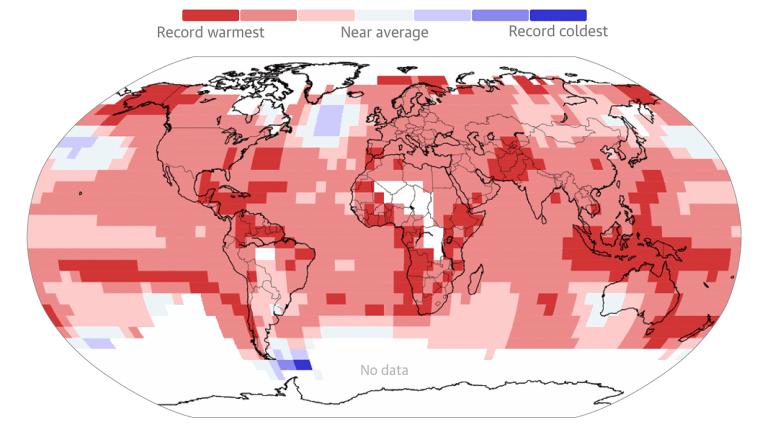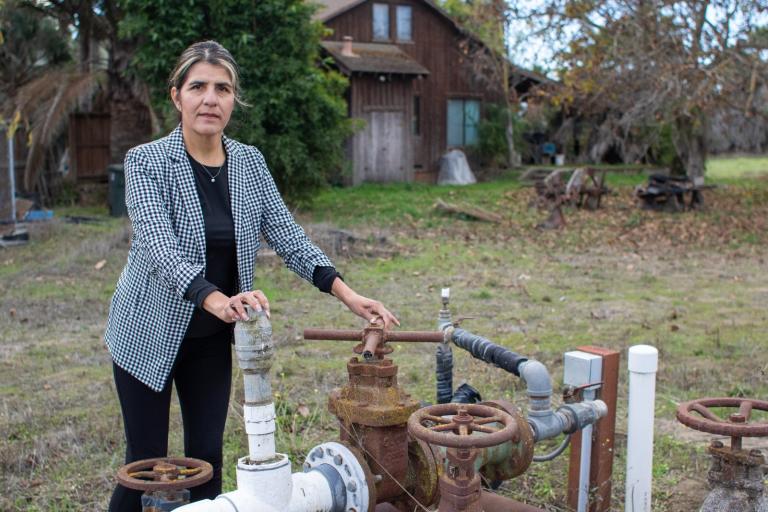California Gov. Jerry Brown is arguably the most pro-climate governor in the country. So when he spoke to a group of scientists about Donald Trump’s election last month, you might have expected him to fret about all the damage a climate-denying White House can manage in the next four years.
Instead, Brown came out swinging. If the Trump administration ends NASA’s climate research, Brown promised that California would step up, reminding the crowd that he was once called Governor Moonbeam for his fascination with outer space.
“If Trump turns off the satellites, California will launch its own damn satellite,” he said. “We’ve got the scientists, we’ve got the lawyers, and we’re ready to fight.”
This can-do climate attitude has swept the country in recent years. And now that a climate science–denier is moving into the White House, activists, mayors, and state legislators from across the country are pulling up their organic cotton socks and setting more aggressive goals. They’re pushing for more wind and solar power, trying to block coal exports, and planning to put more electrical vehicles on the road.
“States have always led the way in regards to creating significant U.S action on climate change,” says Heather Leibowitz, director of Environment New York. “The Trump victory will make state climate change efforts even more important.”
Going back to Cali
In the wake of Trump’s victory in November, the highest-ranking leaders of both houses of California’s legislature and mayors of the state’s major cities, such as Los Angeles’s Eric Garcetti, reaffirmed their commitment to making progress on climate change.
“I’m encouraged that California leaders have all made clear statements that California will continue to set the bar high and lead the way,” says Michelle Kinman, clean energy advocate at Environment California.
In September, Gov. Brown signed a law requiring the state to cut its greenhouse gas emissions to 40 percent below 1990 levels by 2030. That’s no small feat for a state with a growing economy and a swelling population. So California is looking for new ways to meet that ambitious emissions target, aiming to put 1 million electric vehicles on the road by 2023 and to get half of the state’s power from renewable sources by 2030.
The Brown administration also increased the size of rebates for buying electric cars and announced plans to add 7,500 electric vehicle charging stations in the coming years.
California already has three state-supported pilot programs for getting more electric cars on the road. In the San Joaquin Valley and the Los Angeles metro area, partly to help clean the smog-choked air, buyers can get up to $9,200 in incentives to retire their conventional car and buy a low-emissions one.
Another pilot program in the San Francisco Bay Area provides low-interest loans to people with little or no credit history to purchase an electric car. A third program sets up a low-income electric car sharing service expected to launch in L.A. and Sacramento later this year.
The biggest ambition for California climate hawks, however, is a statewide ban on fracking. Momentum is building: Six California counties have already prohibited the practice. The latest victory came in November when voters approved a ballot initiative in oil-rich Monterey County, even though Chevron and other oil companies spent millions of dollars to stop it.
Best coast
The Pacific Northwest sits between the oil and gas-rich Bakken Shale, Wyoming’s coal-heavy Powder River Basin, and oil hungry markets in Asia. Communities throughout the Pacific Northwest have been organizing to stop fossil fuels from coming through their towns on trains, ships, and in pipelines. Last year, for instance, the Vancouver, Washington, city council passed a ban on future oil terminals, although the measure still requires the Governor’s approval. Elsewhere in the state, the towns of Hoquiam and Aberdeen changed their zoning codes to prevent oil companies from using their ports to ship their product to Asia. Locals worry that an oil spill could devastate the local fishing industry.
And just last week, the Quinault, a coastal Native American tribe, won a key legal challenge to a proposed oil train terminal, which likely spells the death of the project.
“Tribes and environmental activists have run the tables on the fossil fuel companies over the last few years in the Pacific Northwest,” says Eric de Place, policy director at the Sightline Institute, an environmental think tank in Seattle.
Now that Big Oil will have a friend in the White House happy to grant them federal construction permits, these communities will have to rely on their own local powers to block fossil fuel expansion, rather than pressuring the federal government. Case in point: Portland, Oregon.
Last month, its city council passed zoning changes banning construction of fossil fuel terminals. Activists hope that other cities will follow Portland’s lead, erecting a “green wall” blocking coal, oil, and liquefied natural gas exports to Asia.
“What we’ve done in Portland is replicable now in other cities,” Portland Mayor Charlie Hales told InsideClimate news. “Everybody has a zoning code.” Whatcom County in northwest Washington looks like the first to follow. In the next few weeks, its county council is likely to amend its zoning rules to stymie fossil fuel exports.
Meanwhile, back East
East Coast states have been taking climate change seriously for decades. It was Massachusetts that started the lawsuit which resulted in the Supreme Court’s ruling in 2007 that required the EPA to regulate carbon pollution under the Clean Air Act. The Bay State also has a commitment to get 80 percent of its energy from renewables by 2050, and it’s part of a consortium of Northeastern states that has been working to cut power plant emissions through a regional cap-and-trade system since 2008.
Even though Massachusetts has a Republican Governor, Charlie Baker, it has veto-proof Democratic majorities in the state legislature who are pushing climate action forward. Massachusetts State Senate President Stan Rosenberg recently said he hopes to pass a raft of legislation increasing climate ambition in 2017.
Next door, New York State has set targets to curb carbon emissions and increased renewable energy deployment by 2030. To get there, the state’s utility commission has adopted innovative strategies to reduce energy demand and clean up its energy portfolio, including building a new transmission line for hydropower from Quebec.
Last week, Gov. Andrew Cuomo called on the Long Island Port Authority to approve a 90 megawatt offshore wind farm, which would be the country’s biggest.
Clean energy commonsense, nationwide
The Sierra Club’s Ready for 100 program is an effort to get cities to shoot for 100-percent renewable energy by 2035. The group targets local governments in the 20 states that let cities strike their own deals with energy providers.
“We think this will be a vehicle that will accelerate the transition to clean energy, despite what might happen at the federal level,” says Kassie Rohrbach, Ready for 100’s associate director.
San Diego, the country’s eighth-largest city, and 20 others have committed to relying only on renewables. That includes the seven cities that have already hit that goal. In November, Georgetown, Texas, became the latest to run purely on wind and solar.
Cities are also trying to coax people out of their cars. In November, voters in red and blue states passed initiatives to pay for expanded transit. Seattle and Los Angeles County raised sales taxes to support light rail, while Kansas City, Missouri, and Indianapolis approved tax hikes for new bus service.
Taking it to the streets
And then there are the fights happening outside the walls of any council chamber, courthouse, or statehouse. The Sierra Club’s Beyond Coal campaign has been taking its case directly to the public energy utilities that decide whether to close coal-fired power plants. Last year, the organization helped shutter 24 coal plants, extending a string of successes for Beyond Coal since it launched in 2010.
Closing these plants has curbed carbon emissions and led to cleaner air and water. In November, a research team at Stony Brook University in New York examined Western Atlantic bluefin tuna and found that a poisonous byproduct of burning coal, methylmercury, had dropped 20 percent over the last decade.
To be sure, Trump has promised to trash all of the Obama administration’s rules cracking down on coal pollution, including the Clean Power Plan that prompted Georgetown, Texas, to go green in the first place. But coal appears to be doomed, anyway. In the energy market, it’s getting trounced by cheaper wind, solar, and natural gas. Trump might slow the death of coal, but he can’t stop it.
Mary Anne Hitt, Beyond Coal’s director, said she expects to see dozens of coal plants shut down in Trump’s first year in the White House.
“We expect similar progress in 2017,” she says, “and record amounts of renewable energy coming online to replace it.”
All this progress at the local level may seem paradoxical when we’ve just elected a climate science denier as president. But even most Trump voters don’t agree with his climate policies. That’s why activists are urging local politicians to adopt an ambitious climate agenda.
“It’s important to remember the public overwhelmingly supports a cleaner, healthier future,” says Leibowitz of Environment New York.



